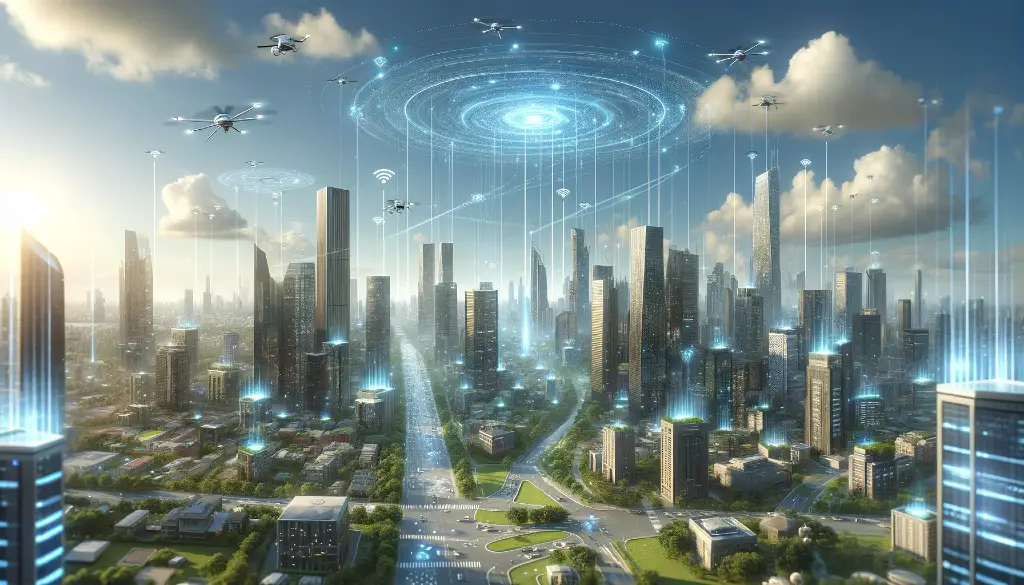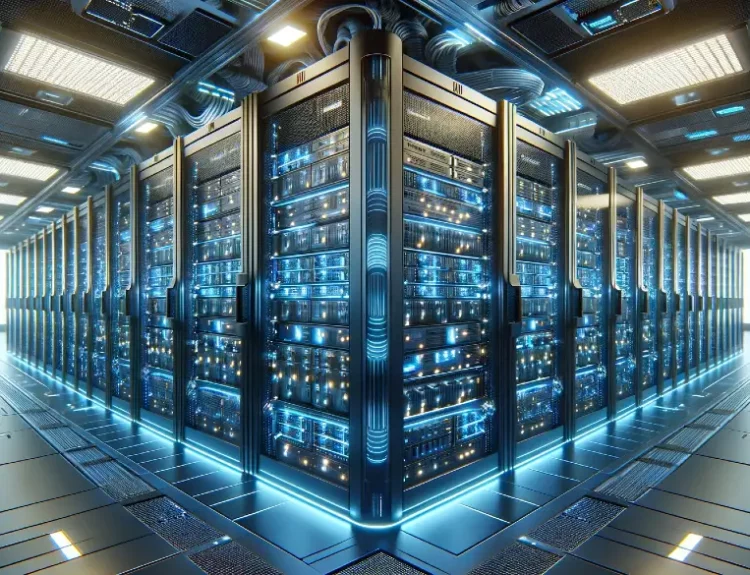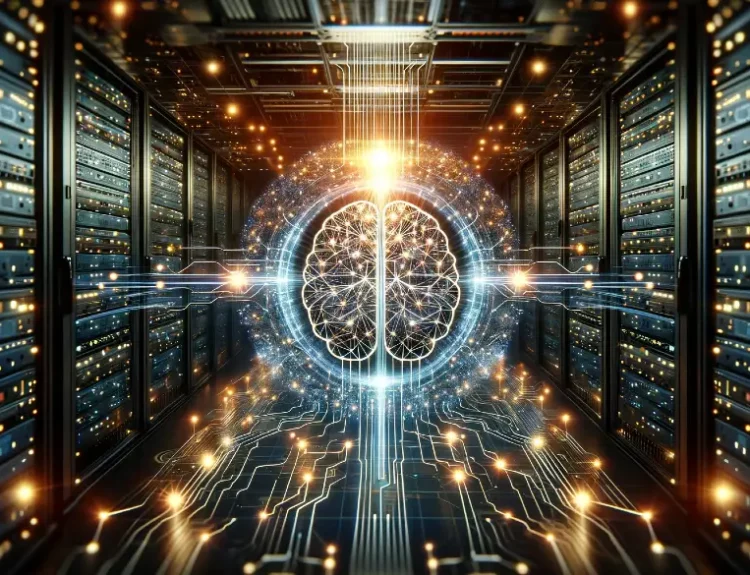Introduction
Do you ever feel like you’re constantly battling for a decent Wi-Fi signal? Imagine video calls buffering endlessly, important downloads crawling at a snail’s pace, or entire webpages refusing to load – all because of a sluggish or unreliable internet connection. These frustrations are all too familiar in today’s digital world, where a strong Wi-Fi connection is no longer a luxury, but a necessity.
Thankfully, the future of Wi-Fi is looking brighter than ever, thanks to the revolutionary power of Artificial Intelligence (AI). AI is rapidly transforming various aspects of technology, and Wi-Fi networks are no exception. By leveraging AI’s analytical capabilities, we’re on the verge of creating “intelligent Wi-Fi solutions” that can optimize performance, enhance security, and ultimately deliver a seamless and frustration-free wireless experience.
The Rise of AI in Wi-Fi Networks
Traditionally, Wi-Fi networks have relied on static configurations and pre-programmed settings. This approach often leads to issues like congested channels, uneven bandwidth distribution, and difficulty adapting to changing network demands. However, AI is injecting a new level of intelligence into Wi-Fi management.
AI, in essence, is the ability of machines to analyze data, learn from patterns, and make intelligent decisions. In the context of Wi-Fi networks, AI can analyze vast amounts of data about network traffic, user behavior, and environmental factors. This data can include things like connected devices, bandwidth usage, signal strength, and interference levels.
By analyzing this data, AI can learn about how users interact with the network and identify areas for improvement. Imagine a system that can not only understand peak usage times but also anticipate them. With this knowledge, AI can then make real-time adjustments to optimize network performance. This could involve tasks like:
- Dynamic Channel Selection: AI can continuously scan for the least congested channels, ensuring optimal signal strength for all connected devices.
- Smart Bandwidth Allocation: AI can prioritize bandwidth for latency-sensitive applications like video conferencing or online gaming, while efficiently managing background tasks.
This newfound intelligence in Wi-Fi networks paves the way for a more efficient, reliable, and ultimately, a much more user-friendly wireless experience.
Benefits of AI-powered Wi-Fi
The integration of AI into Wi-Fi technology is no mere gimmick; it offers a multitude of benefits that can significantly enhance your wireless experience. Let’s delve into some of the key advantages:
- Improved Performance: Say goodbye to frustrating buffering and sluggish downloads! AI-powered Wi-Fi utilizes its analytical prowess to optimize network performance dynamically. Imagine a system that can constantly monitor and adjust channels, ensuring minimal signal interference. Additionally, AI can intelligently allocate bandwidth, prioritizing critical applications like video conferencing or online gaming for a smooth and uninterrupted experience.
- Enhanced Security: In today’s digital landscape, security is paramount. AI can act as a vigilant guardian for your Wi-Fi network, constantly monitoring for suspicious activity and potential threats. AI algorithms can identify patterns indicative of malware or unauthorized access attempts, allowing you to take proactive measures to safeguard your network.
- Self-healing Networks: Imagine a network that can diagnose and fix problems on its own! AI-powered Wi-Fi systems can continuously analyze network performance and identify potential issues like signal degradation or overloaded access points. By leveraging this information, AI can automatically implement corrective measures, ensuring seamless network operation without the need for manual intervention.
- Personalized Experience: No more one-size-fits-all settings! AI can learn from your individual usage patterns and preferences. This allows for a customized network experience tailored to your specific needs. For instance, AI can automatically adjust bandwidth allocation based on your most frequently used applications, ensuring you get the most out of your connection.
These are just a few of the remarkable benefits that AI-powered Wi-Fi brings to the table. With AI constantly learning and adapting, we can expect even more innovative features and improvements in the future. So, get ready to experience Wi-Fi like never before – a truly intelligent and efficient network that caters to your every need.
The Future of AI in Wi-Fi Technology
The current advancements in AI-powered Wi-Fi are just the tip of the iceberg. As AI technology continues to evolve, we can expect even more revolutionary changes in the way we experience wireless connectivity. Here’s a glimpse into the exciting possibilities that lie ahead:
- Self-Configuring Networks: Imagine a future where setting up a Wi-Fi network is as simple as plugging in a router. AI-powered systems will be able to automatically configure themselves based on the environment, number of devices, and user needs. This will eliminate the need for manual configuration and ensure optimal performance from the get-go.
- Predictive Maintenance: Proactive maintenance is key to a healthy and reliable network. AI will be able to analyze network data and predict potential issues before they occur. This allows for preventative measures to be taken, minimizing downtime and ensuring a consistently smooth connection.
- Seamless Connectivity Across Devices: With the ever-growing number of smart devices in our homes, managing multiple connections can become a hassle. AI-driven Wi-Fi systems will be able to seamlessly manage connections across various devices, ensuring optimal performance for all users. Imagine a network that intelligently prioritizes bandwidth for a video call on your laptop while still allowing uninterrupted streaming on your smart TV.
- Hyper-Personalized Experiences: AI will take network personalization to a whole new level. By deeply understanding individual user preferences and habits, AI will be able to dynamically adjust network settings for an ultra-customized experience. This could involve features like automatically prioritizing bandwidth for your favorite streaming services or optimizing connection speeds for specific applications.
The future of Wi-Fi technology is undeniably intertwined with the continued development of AI. With AI at the helm, we can expect a future of intelligent, self-optimizing, and hyper-personalized Wi-Fi networks that seamlessly integrate into our ever-evolving digital lives.
Join the AI Revolution with Verdict
As you can see, AI is poised to revolutionize the way we experience Wi-Fi networks. But the potential of AI extends far beyond Wi-Fi. At Verdict AI Platform, we believe in harnessing the power of AI to create a better future for technology as a whole.
We’re building a platform where Machine Learning (ML) and Artificial General Intelligence (AGI) evolve through real-world interactions and the insights of our community. Every search, chat, and shared result on Verdict contributes to building an AI that understands and grows alongside you.
Imagine an AI that reflects the diversity of our world, learns from our collective experiences, and expands with our shared knowledge. By joining Verdict, you become a part of this exciting journey.
Become a part of the future of AI-powered Wi-Fi. Sign up for Verdict today!
Conclusion
The integration of AI into Wi-Fi technology marks a significant leap forward in creating a more efficient, reliable, and ultimately user-friendly wireless experience. From enhanced security and self-healing networks to personalized experiences and seamless connectivity, the benefits of AI-powered Wi-Fi are undeniable.
As AI technology continues to evolve, the possibilities for the future of Wi-Fi are truly limitless. We can look forward to a future of intelligent networks that adapt to our needs and seamlessly integrate into our lives.
Stay tuned for more fascinating explorations of AI! Explore our blog page for insightful articles on topics like AI’s Influence on News Coverage and AI’s Interaction with Human Computing, and many more!










